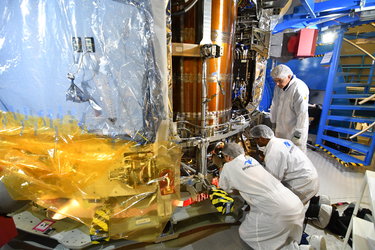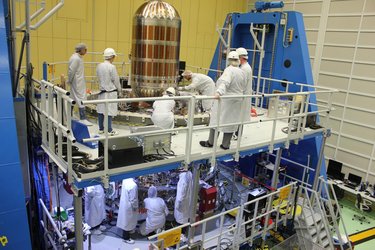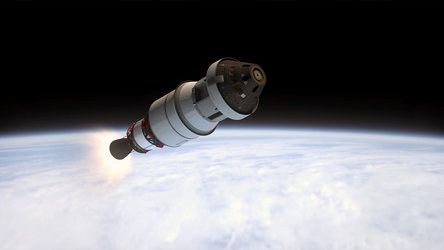Structural
A spacecraft must withstand many stresses, from the vibration of launch to temperature changes in space and changes in pressure from Earth to space.
The European Service Module provides structural rigidity to the Orion spacecraft much like the chassis of a car. It absorbs the vibrations and energy from launch and protects them from micrometeoroids and space debris.
The European Service Module connects the crew module to the launcher and absorbs the vibrations from a rocket that has the equivalent thrust of 34 Jumbo Jets.
The service module’s secondary structure supports elements such as the spacecraft’s thrusters and water tanks.

Lastly, the European Service Module is covered in multilayer material that absorbs impacts from tiny, high-speed objects in space. Micrometeoroids and space debris are serious threats: the impact of a paint flake travelling at up to 72 km/s can have serious consequences.
The module has a Kevlar-reinforced Whipple shield with two layers of armour standing above the spacecraft’s shell. Any objects that strike the shield break into fragments on impact with the outer layer, and then the inner layer stops anything from penetrating the vessel and its mission-critical hardware.
Technical details:
- Primary structure ensures structural continuity between launcher and Crew Module Adapter
- Longerons assembly
- Webs assembly
- Tanks bulkhead (or tanks platform)
- Lower platform assembly
- Secondary structure
- Tank support
- Thruster pod support
- Main engine support
- Micrometeoroids and Debris Protection System (MDPS)
- Metallic MDPS (aft bumper and local protections)
- Nextel / Kevlar MDPS (aft part of the ESM, and behind the radiators)















 Germany
Germany
 Austria
Austria
 Belgium
Belgium
 Denmark
Denmark
 Spain
Spain
 Estonia
Estonia
 Finland
Finland
 France
France
 Greece
Greece
 Hungary
Hungary
 Ireland
Ireland
 Italy
Italy
 Luxembourg
Luxembourg
 Norway
Norway
 The Netherlands
The Netherlands
 Poland
Poland
 Portugal
Portugal
 Czechia
Czechia
 Romania
Romania
 United Kingdom
United Kingdom
 Slovenia
Slovenia
 Sweden
Sweden
 Switzerland
Switzerland









































